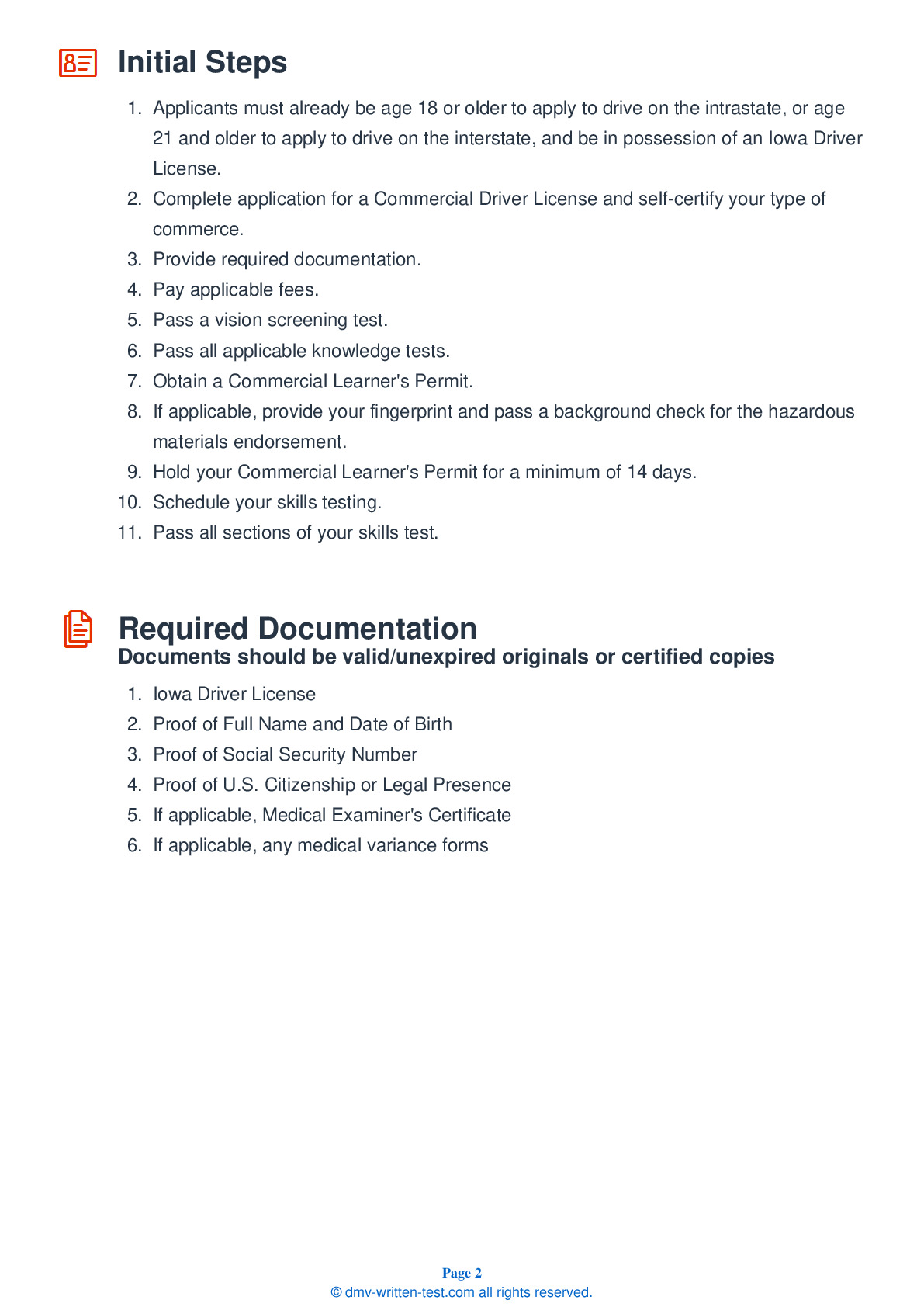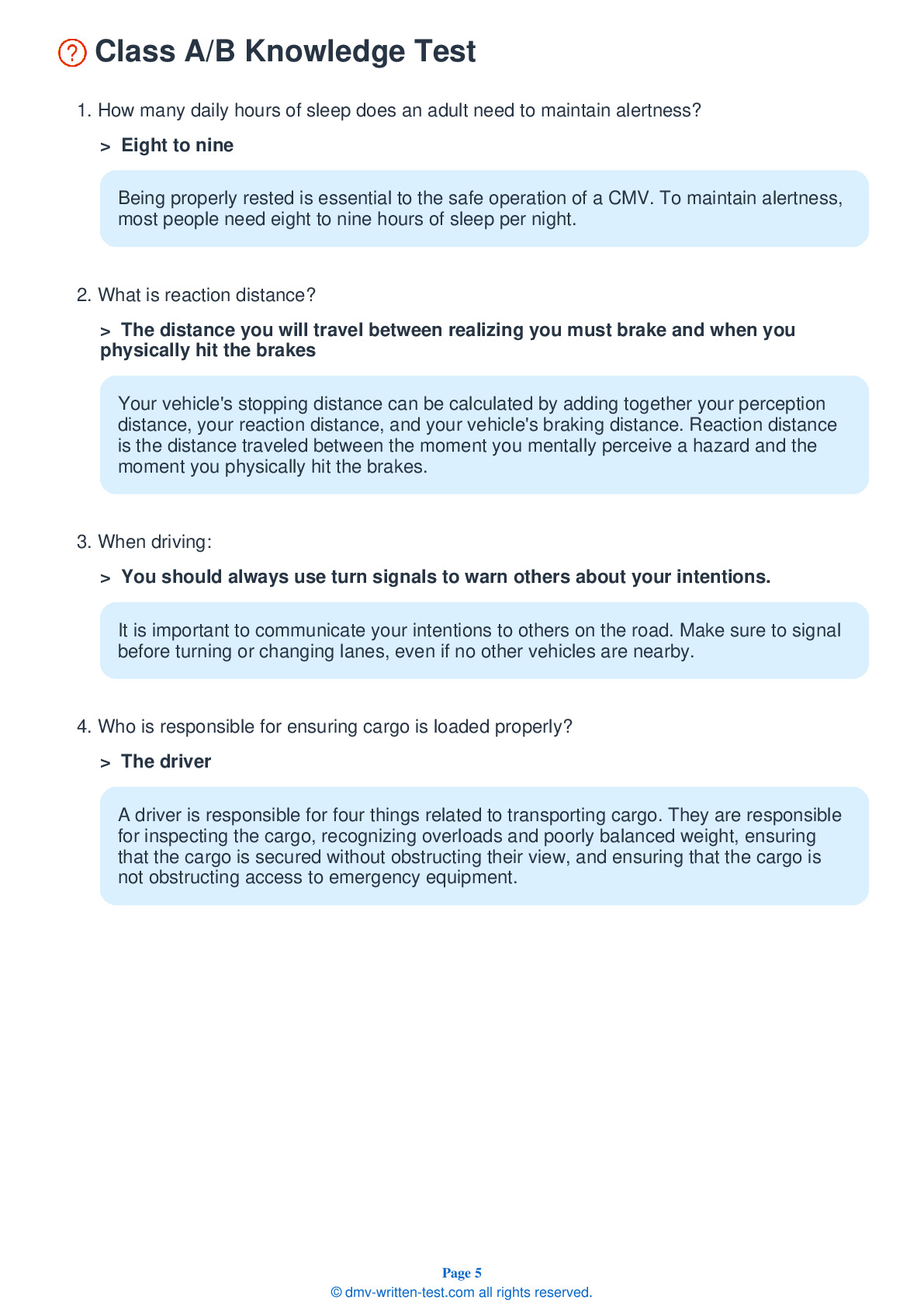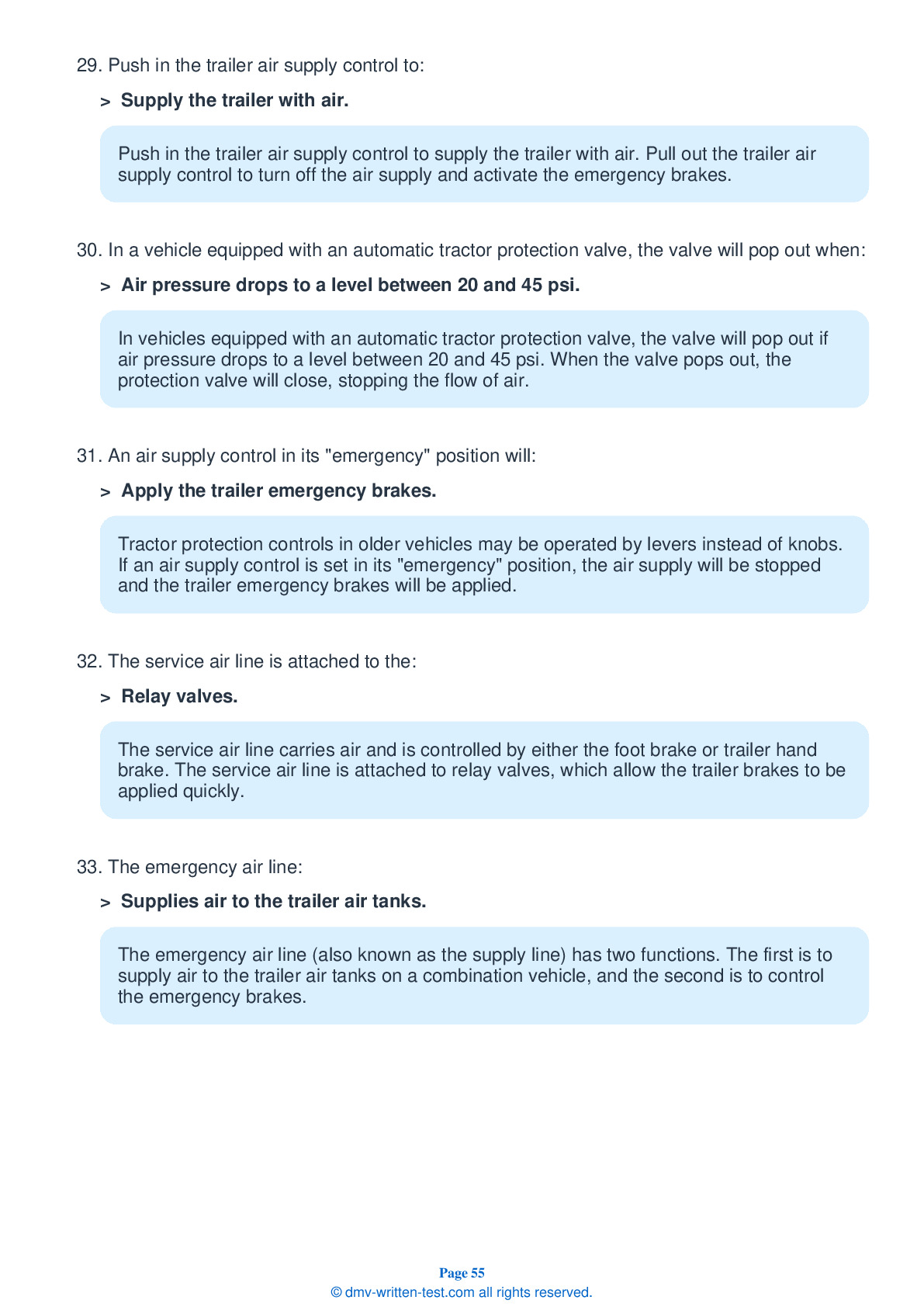Combination
All applicants who are applying for a Class A CDL should be prepared to take the Combination test. This test covers information found in Section 6 of the Commercial Driver License Manual. Section 6 provides the information needed to safely operate tractor-trailers, doubles, triples, and straight trucks with trailers. The test is made up of 20 multiple-choice questions, and applicants will need to correctly answer a minimum of 16 questions to pass. The Combination test is not a replacement for the Double/Triple endorsement test.
Number of Question
Passing Score
1. Before a trip, you can make sure air flows to all trailers by:
Explanation
Before a trip, ensure that air in the air brake system reaches all trailers. Do this by waiting for air pressure to build, then sending air to both the emergency and service lines and opening the shut-off valves on the rear of the last trailer. If air escapes from the shut-off valves in the rear of the combination, the air is being supplied to the entire vehicle.
2. In a vehicle equipped with an automatic tractor protection valve, the valve will pop out when air pressure drops to a level between:
Explanation
In vehicles equipped with an automatic tractor protection valve, the valve will pop out if air pressure drops to a level between 20 and 45 psi. When the valve pops out, the protection valve will close, stopping the flow of air.
3. When backing up your tractor while coupling it to a trailer, the trailer brakes should be:
Explanation
Correctly following the steps to couple and uncouple trailers is vital to safely operating a combination vehicle. Before backing your tractor under the trailer while coupling, make sure your trailer brakes are locked.
4. If a trailer begins to jackknife, the driver:
Explanation
If a trailer begins to jackknife, you should release the brakes and allow the trailer wheels to regain traction with the road. Do not apply the trailer hand brake to attempt to straighten out the rig because the application of brakes is what caused the wheels to lock in the first place.
5. When coupling a trailer:
Explanation
When coupling, make sure you couple matching glad hands. They are often color-coded to help drivers avoid mistakes. Typically, blue is used for service lines and red is used for emergency lines.
6. What is the tractor protection valve?
Explanation
A tractor protection valve keeps air in a tractor or truck air brake system should the trailer break away or develop a bad leak. The valve will close automatically if the pressure drops to an unsafe level.
7. To prevent a rollover, cargo should be:
Explanation




